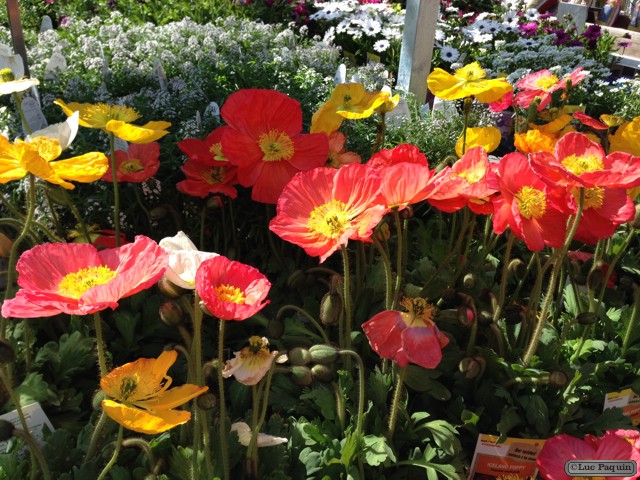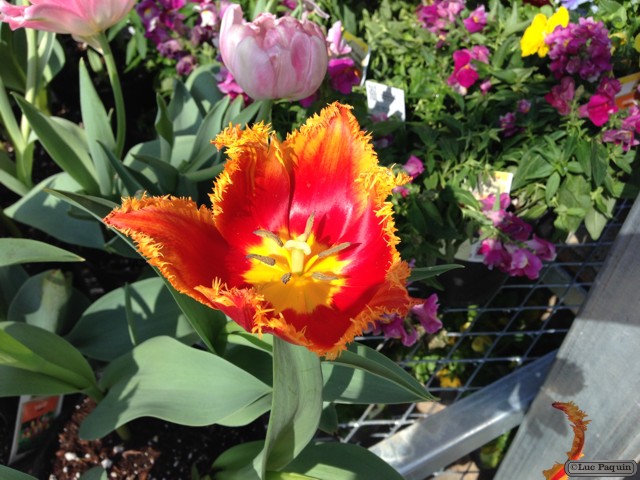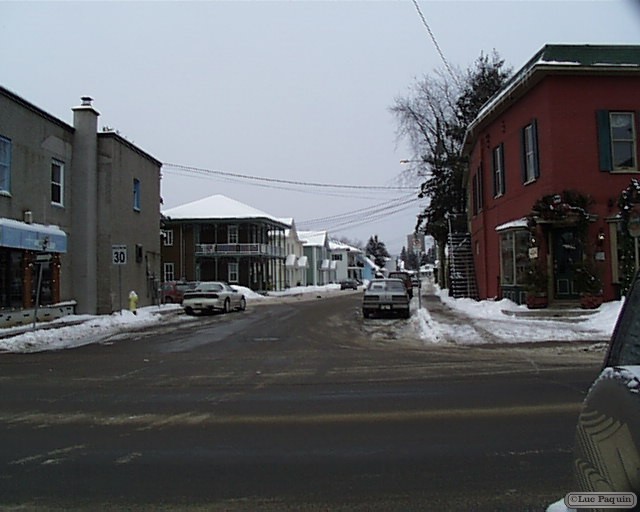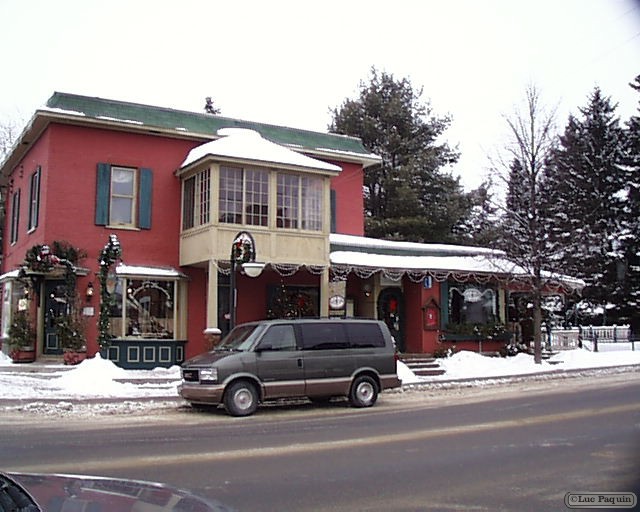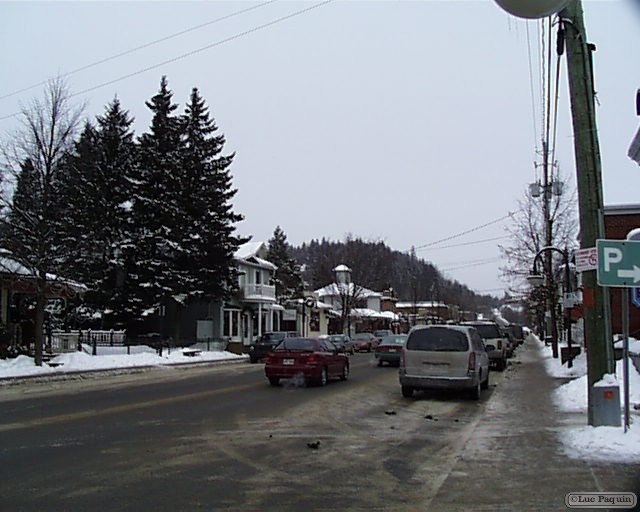Monthly Archives: June 2015
Year: 2015 (February 17, 2015)
11″ x 8.5″
Media: Canon® Pro Platinum High Gloss Photo Paper
Printers: Canon® PIXMA
Color
Art: Photo
Artist: Luc Paquin
The Home Depot, Oceanside, CA, USA
Fringed Tulips
Similar to Crispa tulips have stunning fringed satin-like flower petals. Our Tulipa Crispa will simply delight you with their jewel-toned flowers! Tulip Crispa bulbs give flowers in April to May and can be planted from September to December. These wholesale bulbs give plants of 40 – 60 cm tall and will grow in Partial sun to Full sun.
A Low-Maintenance, Easy-to-Grow Beauty Perfect for Garden and Container! If you want to fill your spring garden with both fabulous color and textural interest, ‘Hamilton’ is the Tulip for you! These stunning blooms have orange petals with a deep green flame running up the center of each one. But perhaps the best part is the fringed edges that are lightly marked with rose. No one will be able to walk past these Tulips without stopping to admire them!
This dazzling variety makes a fabulous addition to borders adding texture and color to spring plantings. Try planting it alongside rich, dark varieties for a superb contrast. The strong stems are ideal for cutting, making them an outstanding option for a stylish, indoor flower arrangement.
Blooming from mid-spring to late spring, ‘Hamilton’ grows to about 1½ feet high and grows best when planted in an area with full sun. Like all Tulips, it’s extremely easy to grow, and its size and the fact that it’s so low-maintenance mean it’s great for patio containers as well.
Tulips should be watered at least twice per week when temperatures reach 75 degrees and higher to keep the leaves green as long as possible. After the leaves die, dig the bulbs up and divide them or keep them in the ground during the summer.
Just imagine having these blooms greeting you each spring all around your deck or patio! And of course, we can’t forget what wonderful cut flowers Tulips are, and ‘Hamilton’ is sure to steal the show!
Luc
Year: 2015 (February 17, 2015)
11″ x 8.5″
Media: Canon® Pro Platinum High Gloss Photo Paper
Printers: Canon® PIXMA
Color
Art: Photo
Artist: Luc Paquin
The Home Depot, Oceanside, CA, USA
Poppy
A poppy is a flowering plant in the subfamily Papaveroideae of the family Papaveraceae. Poppies are herbaceous plants, often grown for their colorful flowers. One species of poppy, Papaver somniferum, produces edible seeds, and is also the source of the crude drug opium which contains powerful medicinal alkaloids such as morphine and has been used since ancient times as an analgesic and narcotic medicinal and recreational drugs. Following the trench warfare which took place in the poppy fields of Flanders, during the 1st World War, poppies have become a symbol of remembrance of soldiers who have died during wartime.
Luc
Year: 2015 (February 17, 2015)
11″ x 8.5″
Media: Canon® Pro Platinum High Gloss Photo Paper
Printers: Canon® PIXMA
Color
Art: Photo
Artist: Luc Paquin
The Home Depot, Oceanside, CA, USA
Fringed Tulips
The tulip is a Eurasian and North African genus of perennial, bulbous plants in the lily family. It is an herbaceous herb with showy flowers, of which around 75 wild species are currently accepted.
The genus’s native range extends west to the Iberian Peninsula, through North Africa to Greece, the Balkans, Turkey, throughout the Levant (Syria, Israel, Palestinian Territories, Lebanon, Jordan) and Iran, north to Ukraine, southern Siberia and Mongolia, and east to the Northwest of China. The tulip’s centre of diversity is in the Pamir, Hindu Kush, and Tien Shan mountains. It is a common element of steppe and winter-rain Mediterranean vegetation.
A number of species and many hybrid cultivars are grown in gardens or as potted plants.
These tulips have petals which are topped with fringes that look like the frayed edge of a piece of satin fabric. Some garden centres may carry only two or three varieties of Fringed Tulips, but they are gradually becoming more popular, not only because the flowers look so elegant, but also because the blooms are quite long-lasting.
Luc
Year: 2001 (January 9, 2001)
11″ x 8.5″
Media: Canon® Pro Platinum High Gloss Photo Paper
Printers: Canon® PIXMA
Color
Art: Photo
Artist: Luc Paquin
Lac des Trois Montagnes, La Conception, QC, Canada
The lake front vacation homes around Lac des Trois Montagnes make the perfect base camp to explore the Parc du Mont Tremblant. The national park is the largest and oldest in Quebec. In 1894 a doctor announced plans for a sanatorium on Mont Tremblant. The sanatorium was never built, but the land had already become a government protected reserve laying the ground work for the national park. Parc du Mont Tremblant encompasses 373,129 acres and includes 400 lakes and six rivers. Perhaps its most striking feature, however, is 3,176 foot high Mont Tremblant. Known to the Iroquois and Algonquin as “Manitou Ewi Chi Saga,” meaning “Manitou’s Formidable Mountain,” the mountain was considered sacred.
Hairy Woodpecker
Identification
Plumage pattern is nearly identical to the downy’s, with long white patch down the back, variable white spotting on the wing coverts and flight feathers, and mostly unmarked underparts. The outer tail feathers are usually unmarked white. Adult: male shows red nuchal bar, often divided vertically by black (especially in some eastern populations); red is lacking in female.
Luc
Year: 2001 (January 9, 2001)
11″ x 8.5″
Media: Canon® Pro Platinum High Gloss Photo Paper
Printers: Canon® PIXMA
Color
Art: Photo
Artist: Luc Paquin
Lac des Trois Montagnes, La Conception, QC, Canada
Lac des Trois Montagnes is one of hundreds of lakes in the Laurentides and Lanaudiere regions of Quebec, Canada. There are so many, one more might seem unremarkable, but there is nothing common about the area around Mount Tremblant. Lac des Trois Montagnes is the second largest lake in the area and has a maximum depth of 222 feet. The water is clean and clear and full of trout, and there is plenty of room to swim, boat, water ski, and kayak. Although the shoreline still feels natural and wooded, there are plenty of vacation rentals and real estate for sale including waterfront lots.
Luc
Year: 2001 (January 9, 2001)
11″ x 8.5″
Media: Canon® Pro Platinum High Gloss Photo Paper
Printers: Canon® PIXMA
Color
Art: Photo
Artist: Luc Paquin
Lac des Trois Montagnes, La Conception, QC, Canada
She clips the carabineer onto the metal ring drilled into the rock. Reaching out with her foot she teeters between metal steps walking the “iron road.” It would be less scary not to look down, but the view is one of the things that made her hang herself off the side of this cliff. She checks her protection one more time, then leans out and looks down. Below her, is one of the most beautiful views in the Laurentides Region of Quebec. Literally hundreds of lakes dot the landscape. She imagines she can pick out Lac des Trois Montagnes, and tonight when she is sipping wine on the deck of her lakeside vacation home she will look back at the mountain and remember this moment. The day, she’ll remember the rest of her life.
Hairy Woodpecker
Like a large, long-billed version of the downy woodpecker, the hairy is a widespread generalist of a variety of forests and woodlands over most of the continent. Polytypic. Length 9″ (24 cm).
Luc
The Minolta X-700 is a 35 mm single-lens reflex film camera introduced by Minolta in 1981. It was the top model of their final manual-focus SLR series before the introduction of the auto-focus Minolta Maxxum 7000. It used the basic body of the XG-M with electronically controlled stepless speeds, but added full program autoexposure in addition to the XG-M’s aperture priority and metered manual modes. It also introduced through-the-lens (TTL) flash metering, and added exposure lock and interchangeable focusing screens to the XG-M’s features. Based on the X-700 chassis, Minolta later launched the cheaper models X-300 and X-500. The X-500 lacked the X-700’s program exposure mode, but featured a fill-in flash mode. The X-300 was the basic model of the late X-series. It lacked TTL flash metering and program exposure mode, it did not show the f-stop-setting of the lens in the viewfinder and it did not have a depth-of-field control button. Basic parts of all three cameras, i.e. shutter, viewfinder, mirror system, and light metering system were identical.
Motivated by the huge success of the low-priced Canon AE-1 and other, consumer-level cameras, Minolta followed suit in the new camera’s design by offering more external camera features. This had the effect of lowering the budget for the camera’s internal mechanism. In a step backwards, the new X-700 was not equipped with the fast vertical metal shutter of previous XE and XD cameras, and was instead fitted with a less expensive horizontal traverse silk shutter, enabling maximum sync speed of 1/60 second, and operated by an electromagnetic shutter release. No mechanical shutter speed was provided, even in bulb mode. The resultant battery drain and inability to meter at light levels below EV-1 makes the camera a poor choice for long exposures or astrophotography. Minolta further lowered the price of the camera by fabricating certain parts in the film advance and rewind mechanism of less expensive materials, and by the use of less expensive electronic components. Even the rewind lever of the camera is made of plastic.
The X-700 was awarded the European “Camera of the Year” award in 1981, and its competitive pricing resulted in its becoming the most successful Minolta camera since the SRT line. As Minolta began to introduce its auto-focus cameras and lenses, further research and development of manual-focus 35mm SLR cameras was shelved. Some internal components of the X-700 were changed over its production run, apparently in an effort to further reduce costs. Minolta was also one of the first major 35mm SLR manufacturer to outsource assembly of its cameras to countries outside Japan. The camera was discontinued in 1999.
Luc
Year: 2001 (January 9, 2001)
11″ x 8.5″
Media: Canon® Pro Platinum High Gloss Photo Paper
Printers: Canon® PIXMA
Color
Art: Photo
Artist: Luc Paquin
Mont-Tremblant, Quebec, Canada
Village
In the United States, the meaning of “village” varies by geographic area and legal jurisdiction. In many areas, “village” is a term, sometimes informal, for a type of administrative division at the local government level. Since the Tenth Amendment to the United States Constitution prohibits the federal government from legislating on local government, the states are free to have political subdivisions called “villages,” or not to do so, and to define the word in many different ways. Typically, a village is a type of municipality, although it can also be a special district or an unincorporated area. It may or may not be recognized for governmental purposes.
Luc
Year: 2001 (January 9, 2001)
11″ x 8.5″
Media: Canon® Pro Platinum High Gloss Photo Paper
Printers: Canon® PIXMA
Color
Art: Photo
Artist: Luc Paquin
Mont-Tremblant, Quebec, Canada
Village
Although many patterns of village life have existed, the typical village was small, consisting of perhaps 5 to 30 families. Homes were situated together for sociability and defence, and land surrounding the living quarters was farmed. Traditional fishing villages were based on artisan fishing and located adjacent to fishing grounds.
Luc
Year: 2001 (January 9, 2001)
11″ x 8.5″
Media: Canon® Pro Platinum High Gloss Photo Paper
Printers: Canon® PIXMA
Color
Art: Photo
Artist: Luc Paquin
Mont-Tremblant, Quebec, Canada
Village
In the past, villages were a usual form of community for societies that practise subsistence agriculture, and also for some non-agricultural societies. In Great Britain, a hamlet earned the right to be called a village when it built a church.[1] In many cultures, towns and cities were few, with only a small proportion of the population living in them. The Industrial Revolution attracted people in larger numbers to work in mills and factories; the concentration of people caused many villages to grow into towns and cities. This also enabled specialization of labor and crafts, and development of many trades. The trend of urbanization continues, though not always in connection with industrialization. Villages have been eclipsed in importance as units of human society and settlement.
Luc

